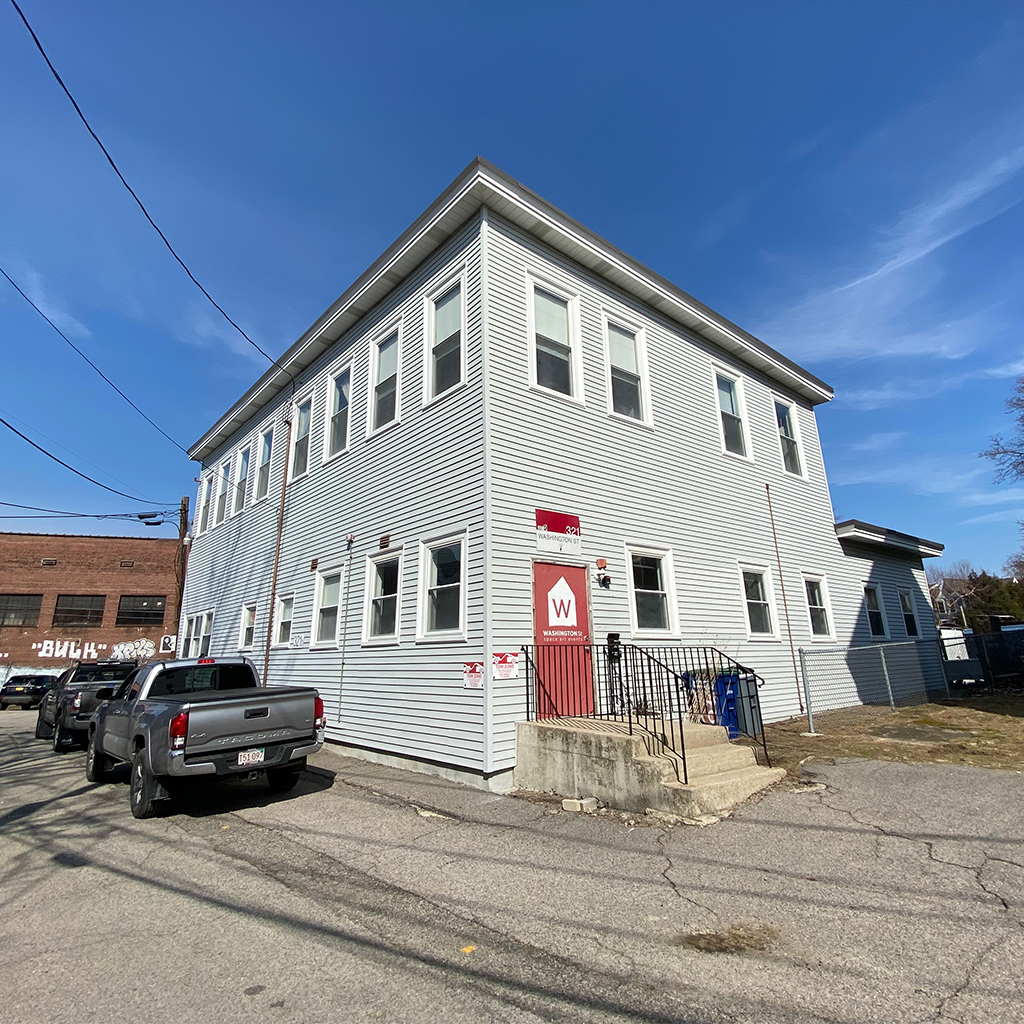
The owner of a parcel at 321 Washington St., site of the Washington Street Arts Center and other businesses, seeks a rezoning. (Photo: Marc Levy)
Another potential rezoning of Somerville’s fabrication – or “fab” – district was met with intense opposition during a Feb. 15 meeting of the City Council’s Land Use Committee.
The parcel is at 321 Washington St., the site of the Washington Street Arts Center and other businesses near Union Square. The owner, Gregg Donovan, was not present for the meeting and so could not speak to his specific plans, but he filed a letter to the City Council explaining his reasoning.
“The property has been underutilized in recent years due to shifts in the economy and business landscapes during the Covid epidemic and recovery. I feel that the additional categories under CI will help attract new business to the location, thus creating new jobs and a new infusion of commerce into the neighborhood,” the letter said, using a term for Commercial Industry zoning.
Donovan’s letter added that the CI and fab districts are “fairly close” because they both had no residential use. The city’s zoning ordinance spells out that fab is for the “arts and creative economy and supporting commercial activities,” while a Commercial Industry zone allows uses “that are typically auto-oriented, commercial service, industrial or office in nature.”
The CI district allows “more services and commercial business types, which is our main objective,” Donovan wrote.
The tenants at the arts center said in March 2022 that they felt anxious and uncertain as the owner’s G.A. Donovan Management announced rent hikes of 31 percent since the end of 2021, when the previous owner sold.
For the past four months, the city has been grappling with another possible diminishment of a fab district from the owner of the business campus known as Somernova. It proposed an expansion – now on hold – beyond what’s allowed by the zoning, which is only about five years old.
While Donovan felt the change at Washington Street would not hurt the neighborhood, local artists disagreed. Members of coalitions such as #ArtStaysHere and Don’t F with FAB attended, dominating a public comment period.
Amy Bennett, a representative for #ArtStaysHere, spoke to the importance of the fab district and its uniqueness to Somerville.
“In our work, we praise Somerville for its fabrication district and ACE requirements, tools we don’t have in Boston or Cambridge,” Bennett said, using a term for arts and creative enterprises.“That’s why Somerville still has some dedicated affordable arts buildings, including the Washington Street Art Center … Please preserve art spaces in designated fabrication districts. Don’t F with FAB.”
Dan Coughlin, a tenant at the Joy Street Studios, said he “worried that if it’s a domino effect, if it happens in one place, all the rest of these places will be at risk.” Fab makes up a vanishingly small portion of Somerville’s zoning districts, he said.
City councilor for Ward 2 J.T. Scott stood cautiously against the proposal: “I’m inclined to be opposed to this. Of course, I’ll respectfully wait until the Planning Board provides their written guidance.”
The parcel lies just over the railroad tracks bordering Somernova’s campus, one of the few large areas zoned as a fab district. During the same Feb. 15 meeting, chair of the Land Use Committee Michael McLaughlin confirmed that developer Rafi Properties had recently pulled its proposal to create an overlay district allowing buildings up to 16 stories.
This move comes after Mayor Katjana Ballantyne proposed a drastic decrease in Rafi’s proposed height and to keep some of the overlay under fab as a response to public comments around the height and increased campaigning by artists’ coalitions. Rafi noted that it wished to work with the Union Square Neighborhood Council and come back with a proposal in the spring.
In other development news:
- During the same meeting, many residents pushed back – but some supported – a zoning amendment that would add summer camps as an allowed use. The amendment does not specify which districts would allow the new zoning, but city planner Emily Hutchings noted that it would address a “missing middle” of child care in Somerville. Residents opposed to the change said summer camps would create too much noise and traffic, while those in favor said residents needed a place to take their children for the summer.
- Plans to ground McGrath Highway and turn it into “McGrath Boulevard” are advancing. A Feb. 13 public meeting held by state transportation officials detailed how the highway would become a smaller intersection. StreetsBlog Massachusetts reported that, with funding for the project coming in 2027 and planning spanning a decade, the state is beginning to fine-tune its plans for fewer lanes, more green space and dedicated bike lanes. While the original plan called for a six- to seven-lane highway level with the neighborhood, current plans feature large stretches with four lanes, widening at intersections and medians with green space. Proponents of the plan argue that grounding the highway would increase East Somerville’s connectivity with the rest of the neighborhood. Strikingly, Gary McNaughton of MassDOT noted the project’s intention of reducing vehicle traffic: “We are taking away vehicle capacity. And we will continue to do that [and] look for further opportunities.”
This post was originally published on this site be sure to check out more of their content









